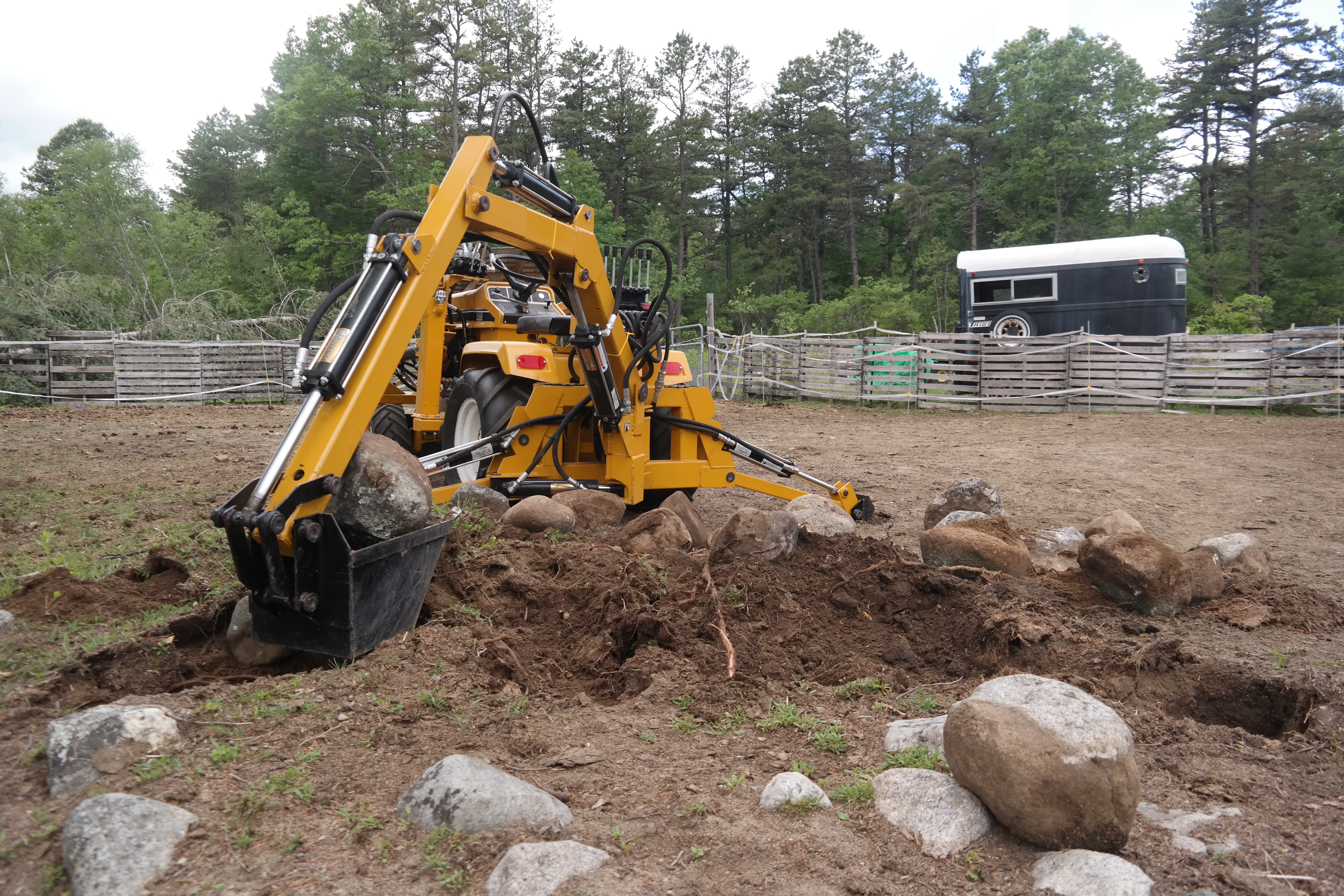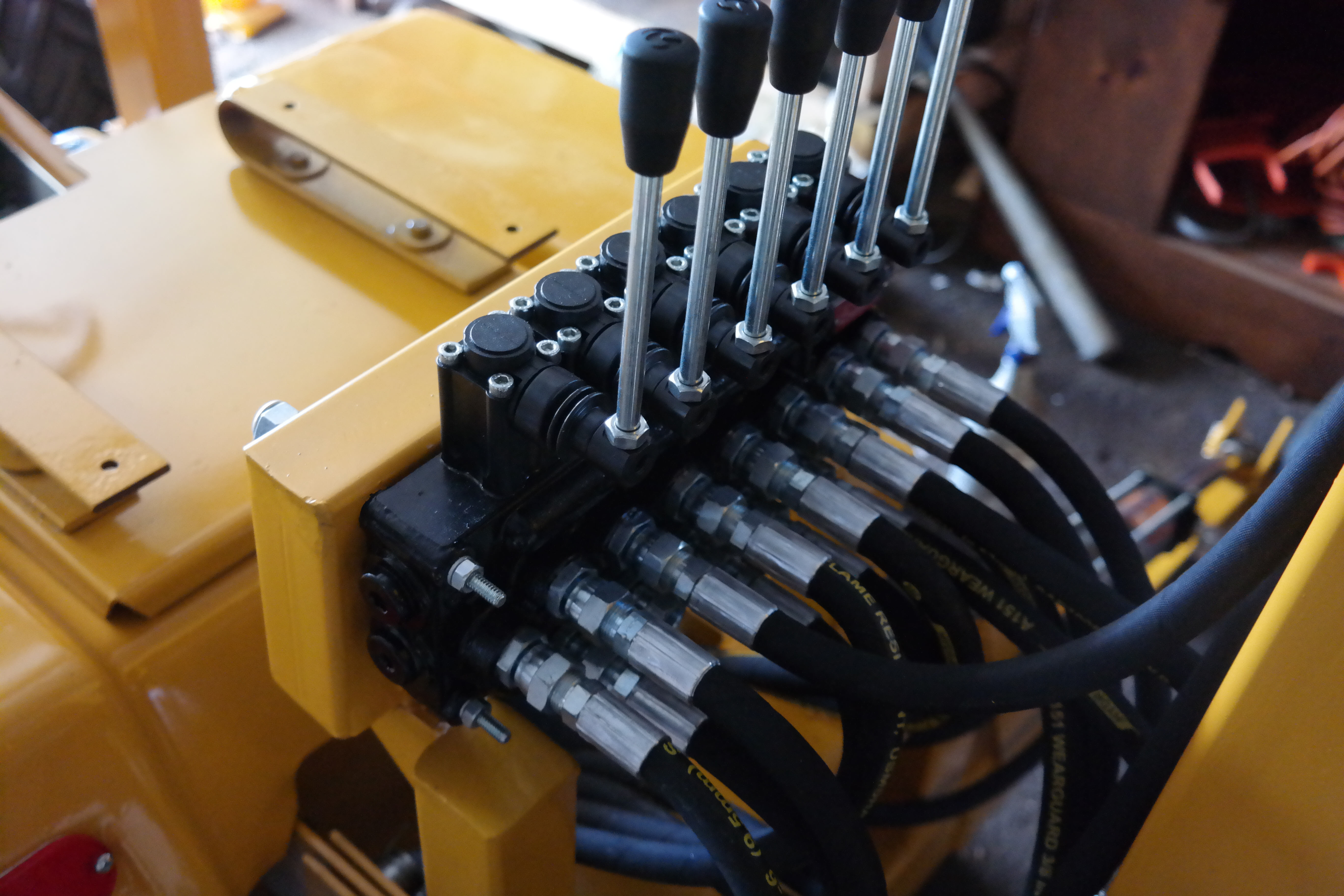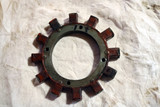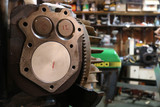Tractor Science: Hydraulics
Do you want to turn your old garden tractor into a serious earth moving machine? How about convert your manual lift system into a power system? Want to add a rear PTO? Do you want to multiply your engine’s power by 1,000 times or more? It’s all possible by using the science behind hydraulic power!

A hydraulic system is a simple, space efficient way of multiplying and transferring your engine’s power to multiple applications for your tractor. By utilizing hydraulics you can build a front end loader, backhoe, 3 point hitch, 3 way plow, a dump trailer and much more. The limits are in your imagination.
In this article I am going to go over the basics of hydraulics and how you can take advantage of the physics of fluid.
Basic Hydraulic Principles
The 3 Most basic principles behind hydraulics are:
1.) Liquids are incompressible
2.) Liquids transmit pressure in all directions and with equal force at right angles to all surfaces
3.) Liquids under pressure follow the path of least resistance
Some Hydraulic Terms to Know
Pressure: Is the resistance to flow normally created by a load. This is expressed as Pounds per square inch or PSI
Flow: This is the rate of which fluid flows through a system. This is expressed as Gallons per Minute or GPM
Displacement: This is the volume of fluid.
Basic Components of a Hydraulic System
The basic components in a hydraulic system are:
1.) Reservoir 2.) Pump 3.) Valve 4.) Piston or Motor
The reservoir holds the fluid; in the case of our garden tractors, oil. The pump moves oil throughout the entire system. The valve directs oil to different hydraulic cylinders or motors. The Piston or Motor is where the final work is performed. A piston will move loads up and down, and a motor will rotate. All of the components are connected by hydraulic hoses or lines.

How the Hydraulic System Works
The hydraulic system begins with the reservoir. This reservoir contains the oil used in the system. Oil is delivered from the reservoir to the hydraulic pump. From there the oil flows to the hydraulic control valve. Once activated, the valve will allow oil to flow to and from the hydraulic cylinder. At the same time, oil is moved from the cylinder back to the reservoir where the cycle repeats.

How a Hydraulic System Multiplies and Exerts Force
Since liquids exert force equally in all directions we can multiply the force it gives by increasing the surface area in which we want the liquid to push against. Typically we apply this principle in a hydraulic cylinder. The greater the surface area at the end of the cylinder, the more force gets exerted on the moving piston.
This can be illustrated with this math formula: Force = Pressure x Area
So if we were to push liquid at 1,000 psi into a cylinder with an end area of 2 square inches we would produce 2,000 pounds of force. If we were to enlarge the end area by using a larger diameter hydraulic cylinder with a 4 square inch end area, we would produce 4,000 pounds of force. Since the displacement of the larger cylinder will be greater, our cylinder will move slower but with greater force. Like all other forms of mechanical advantage, we trade speed for power.

Applying Hydraulics to your Vintage Garden Tractor
The engines in our beloved garden tractors have enough power to push hydraulic oil to 2,000 psi or more. By pushing this oil into different sized hydraulic cylinders we can build almost any tool imaginable.
In 2015 I built a Front end Loader and a backhoe for a 1974 International Harvester Cub Cadet 149. I built the reservoir into one of the loader towers, and ran an 8 GPM gear pump off of the engine’s front PTO Shaft. This pump was connected to a 2 spool directional control valve with a power beyond port. This power beyond port supplied oil to a 6 spool control valve that controlled the backhoe. My hydraulic system is set to have a maximum pressure of 1,000 psi.
This same principle can be applied if you wanted to build a rear fork lift, 3-point hitch, snow blade set up. Anything! Instead of using a hydraulic cylinder you can use a hydraulic motor and add a PTO shaft to power implements at any location you desire. You can also vary the motor speed by controlling the volume of oil that feeds it. All you need are the 4 basic hydraulic components of reservoir, pump, valve, and device.
This article serves as a basic introduction to what is possible with hydraulics for your garden tractor. There are a wide variety of pumps, valves, motors, hoses, etc. I hope this article inspires you to research more of what you can do with the physics of fluid.
Thank you for saving the tractors!
- -Norman Ng, iSaveTractors.com
Recent Posts
-
Engine Science: Rewind Your Small Tractor Engine Stator - Charging System Repair
Engine Science: How to Rewind Your Statorby Norman Ng, Founder of iSaveTractorsYour engine’s stator …Sep 10th 2020 -
Engine Science: The Digital Multi-Meter
The ability to detect, observe, and measure electricity is crucial when trying to understand how a …May 7th 2019 -
5 Common Small Engine Rebuilding Mistakes
The engine is the heart of your garden tractor. When performing heart surgery on your tractor, be aw …Jan 4th 2019




